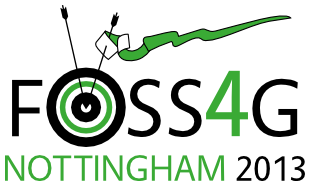Presentation
Opening Up Access To Geological Data With Rasdaman Based WCS And WCPS Services
J Passmore (British Geological Survey)
09:00 on Saturday 21st September (in Session 47, starting at 9 a.m., Banqueting Suite)
Show in Timetable
EarthServer, an ongoing e-Infrastructure EU-FP7 project ending in August 2014, is developing capabilities for access to, and ad-hoc processing of, large Earth science data sets using Open Geospatial Consortium (OGC) standard web service interfaces for coverage data. At project close it is intended that at least 600TB of data, in total, will be available online through a number of services, covering the Cryospheric, Atmospheric, Planetary science, Oceanographic, and Geological domains. The British Geological Survey (BGS) will host the Geological services and will offer a number of applications, beneficial to real users, that will be available beyond the life of the project; demonstrating capability across a range of data held by the organization. At the time of writing, just after the first year of the project the BGS EarthServer service (http://earthserver.bgs.ac.uk/) is hosting demonstration services showcasing inter al. 3D visualization draping remote sensing data over a DTM, thickness calculations between geological surfaces in a model of the Glasgow region, band calculations and sub-setting based on Landsat imagery, and querying superficial thickness floating point data to show regions of a thickness range as an image. Moving forward we shall be, inter al. adding the full national coverage of UK Landsat imagery, adding multiple DTM's and Bathymetrys, adding to and improving our 3D visualizations and querying tools. We shall be adding PS data generated by the ESA TerraFirma project, to allow us to provide time series analysis of height data at any location, and we shall be working with hyperspectral data (CASI and HyMap) to develop an application to show band reflectance signatures to characterize mineral assemblages, to help the management of mine waste and resource mapping. Why should BGS be interested in investigating and developing such systems? Well for a start there is the push of the research councils, national government and EU regulation to open up public access to environmental data, but also within the organization there is the need to share large data between remote partners, for validation of methodology and comparison of results with large, otherwise difficult to distribute, data sets. The EarthServer project is not just restricted to domain specialists opening up their data, it is instead a collaboration between the principal developers of the Rasdaman and Petascope open source software, and also the lead members of the OGC WCS and WCPS standards committees. Thus all project members gain from each other. The software developers gain from having real users with real problems to throw at the software, the data providers gain from the software working to their needs and all gain from the development of the WCS, WCPS, and related standards.
